
The Enchanting Belgian Coast: A Seaside Retreat
Discover the Belgian Coast: A perfect blend of sandy beaches, charming seaside towns, rich history, and delightful gastronomy along the stunning North Sea shoreline.
The Belgian Coast is a stunning stretch of shoreline along the North Sea, known for its charming seaside towns, sandy beaches, and vibrant cultural scene. This coastal region offers a delightful mix of relaxation and adventure, making it a perfect destination for tourists seeking a unique holiday experience. Visitors can explore the picturesque towns of Ostend, Knokke-Heist, and De Haan, each offering its own unique charm. Ostend, often referred to as the 'Queen of the Belgian Coast,' boasts beautiful beaches, a lively promenade, and a rich history. Knokke-Heist is a haven for art and fashion lovers, with its chic boutiques and galleries. De Haan, with its well-preserved Belle Époque architecture, provides a glimpse into the past and a tranquil atmosphere. The Belgian Coast is also famous for its gastronomy. Indulge in fresh seafood, including the famous North Sea shrimp and delicious mussels. Pair your meal with a glass of Belgian beer or a crisp white wine for a truly authentic experience. The coastal region is dotted with excellent restaurants and cozy cafes, perfect for enjoying a meal with a view. For those seeking adventure, the Belgian Coast offers a range of outdoor activities. From sailing and windsurfing to cycling along the scenic coastal routes, there is something for everyone. The region is also home to several nature reserves, where you can enjoy bird watching and peaceful walks amidst stunning landscapes. Whether you are looking to unwind on the beach, explore charming towns, indulge in delicious cuisine, or embark on outdoor adventures, the Belgian Coast has something for every traveler. Its blend of natural beauty, cultural richness, and warm hospitality makes it an unforgettable destination.
Local tips in Belgian Coast
- Check the local event calendar as the Belgian Coast hosts numerous festivals and events throughout the year.
- Rent a bike to explore the coastal routes and enjoy the scenic views.
- Try the local seafood specialties, especially the North Sea shrimp and mussels.
- Visit the Belle Époque architecture in De Haan for a step back in time.
- Pack layers and a windbreaker as the coastal weather can be unpredictable.
The Enchanting Belgian Coast: A Seaside Retreat
The Belgian Coast is a stunning stretch of shoreline along the North Sea, known for its charming seaside towns, sandy beaches, and vibrant cultural scene. This coastal region offers a delightful mix of relaxation and adventure, making it a perfect destination for tourists seeking a unique holiday experience. Visitors can explore the picturesque towns of Ostend, Knokke-Heist, and De Haan, each offering its own unique charm. Ostend, often referred to as the 'Queen of the Belgian Coast,' boasts beautiful beaches, a lively promenade, and a rich history. Knokke-Heist is a haven for art and fashion lovers, with its chic boutiques and galleries. De Haan, with its well-preserved Belle Époque architecture, provides a glimpse into the past and a tranquil atmosphere. The Belgian Coast is also famous for its gastronomy. Indulge in fresh seafood, including the famous North Sea shrimp and delicious mussels. Pair your meal with a glass of Belgian beer or a crisp white wine for a truly authentic experience. The coastal region is dotted with excellent restaurants and cozy cafes, perfect for enjoying a meal with a view. For those seeking adventure, the Belgian Coast offers a range of outdoor activities. From sailing and windsurfing to cycling along the scenic coastal routes, there is something for everyone. The region is also home to several nature reserves, where you can enjoy bird watching and peaceful walks amidst stunning landscapes. Whether you are looking to unwind on the beach, explore charming towns, indulge in delicious cuisine, or embark on outdoor adventures, the Belgian Coast has something for every traveler. Its blend of natural beauty, cultural richness, and warm hospitality makes it an unforgettable destination.
When is the best time to go to Belgian Coast?
Unmissable attractions to see
Sea Life Blankenberge
Explore the enchanting underwater world at Sea Life Blankenberge, where marine wonders and conservation come together for an unforgettable experience.

Leopoldpark
Discover the natural beauty and artistic charm of Leopoldpark in Ostend, a serene oasis perfect for relaxation and exploration.

Atlantikwall Raversyde
Immerse yourself in history at Atlantikwall Raversyde, an open-air museum revealing the secrets of Belgium's World War defenses.

De Garre
Experience the charm of Bruges at De Garre, a cozy bar and café perfect for savoring local brews and enjoying a warm atmosphere.

Maria Hendrikapark
Explore the natural beauty of Maria Hendrikapark in Oostende, Belgium - a serene state park perfect for relaxation, picnics, and nature walks amidst lush greenery.

Fort Napoleon
Discover Fort Napoleon, a historical military fortress and museum in Ostend, Belgium, showcasing rich heritage and stunning coastal views.

Japanse Tuin - Shin Kai Tei
Explore the tranquil beauty of Japanse Tuin - Shin Kai Tei, a serene Japanese garden in Ostend perfect for relaxation and nature appreciation.

Oostduinkerke strand
Discover the serene beauty and vibrant culture of Oostduinkerke Strand, a prime destination for beach lovers and adventurers alike.

Huisje van Majutte
Explore the maritime heritage of Blankenberge at Huisje van Majutte, a unique museum and pub experience in the heart of Belgium's coastal town.
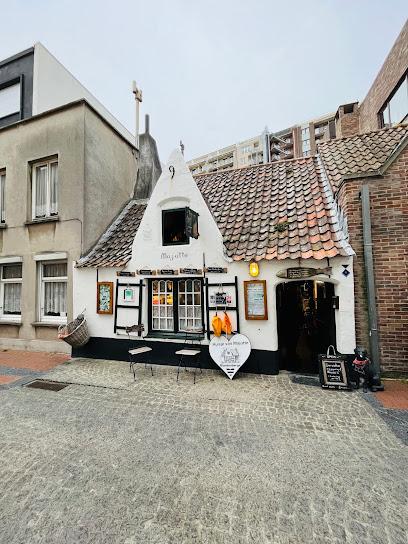
Wenduine Spioenkop
Discover the breathtaking views and serene hiking trails at Wenduine Spioenkop, a must-visit attraction in De Haan, Belgium.

Mu.ZEE
Explore the vibrant world of modern art at Mu.ZEE, a must-visit museum in the heart of Ostend, Belgium, showcasing contemporary creativity and culture.
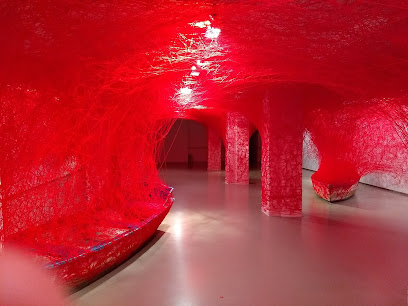
Hoge Blekker
Explore Hoge Blekker: A Natural Haven for Hiking and Nature Lovers in Koksijde, Belgium.

The Monk
Experience the vibrant atmosphere of The Monk, Bruges' favorite sports bar and pool hall, where every game is a celebration.

Castle Loppem
Explore Castle Loppem, a historic gem in Zedelgem offering stunning architecture, beautiful gardens, and scenic hiking trails for every traveler.

Zeeheldenplein
Discover the vibrant charm of Zeeheldenplein, a cultural hub in Ostend, Belgium, perfect for relaxation, dining, and local events.

Essential places to dine
Brasserie Paname
Discover Brasserie Paname in De Haan: Where Culinary Excellence Meets Coastal Charm.

Den Artiest
Experience the best of Belgian grilling at Den Artiest in Ostend, where tradition meets modern culinary excellence.
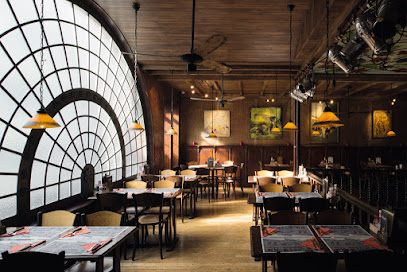
l'Apéro Ostende
Experience the best of Belgian cuisine at l'Apéro Ostende with stunning sea views and delightful dishes crafted from local ingredients.

De Zeebries
Experience fresh seafood and local flavors at De Zeebries in Middelkerke - a culinary gem along Belgium's picturesque coastline.

Cafe Rubens
Experience authentic Belgian cuisine at Café Rubens in Ostend – where culinary tradition meets stunning waterfront views.

Brasserie Henry
Experience authentic Belgian cuisine at Brasserie Henry in Ostend, where tradition meets coastal charm and delicious flavors await.

Oosterstaketsel
Discover Oosterstaketsel: where exquisite Belgian cuisine meets breathtaking seaside views in Blankenberge.

La Stalla
Experience authentic Belgian cuisine at La Stalla in Oostende—where delightful flavors meet warm hospitality.

De Vlasschaard
Experience authentic Belgian cuisine at De Vlasschaard in Ostend - where fresh local ingredients meet culinary excellence.

Restaurant 't Vistrapje
Savor the freshest seafood at Restaurant 't Vistrapje in Ostend, where traditional Belgian cuisine meets stunning coastal views.

Le Chevalier
Experience exquisite seafood dining at Le Chevalier along Ostend's scenic promenade—where flavor meets stunning coastal views.

De Verloren Hoek
Experience the essence of Belgian cuisine at De Verloren Hoek in Bruges, where tradition meets innovation in every dish.

Il Gabbiano
Experience authentic Italian flavors at Il Gabbiano in Ostend - where every meal feels like a trip to Italy.

Brasserie ALBERT
Experience authentic Belgian cuisine at Brasserie ALBERT, where every dish tells a story of tradition and flavor.

Le Foyer
Experience authentic Belgian cuisine with stunning sea views at Le Foyer in Ostend - a must-visit dining destination.

Markets, malls and hidden boutiques
Euro Shop Middelkerke
Experience the vibrant shopping culture at Euro Shop Middelkerke, where local charm meets a diverse selection of products for every traveler.

Action
Explore Action Gift Shop in Middelkerke for unique gifts, DIY projects, and home essentials that capture the spirit of Belgian creativity.

Action Oostende
Explore Action Oostende for a unique shopping experience filled with gifts, DIY supplies, and home essentials in the heart of Ostend.

Dreamland
Explore Dreamland in Ostend, a magical destination filled with captivating gifts, books, toys, and comics for all ages.
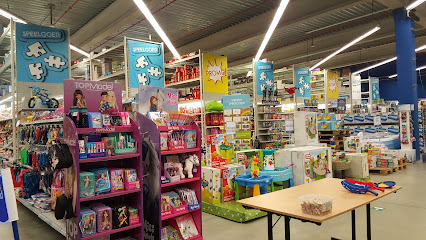
A.S.Adventure
Discover the ultimate outdoor gear at A.S.Adventure in Ostend, your one-stop shop for beachwear, camping essentials, and sports equipment.

HEMA
Explore HEMA in Oostende for an unforgettable shopping experience, featuring gifts, clothing, and home essentials that capture the essence of Belgium.

Flying Tiger Copenhagen
Explore Flying Tiger Copenhagen in Ostend for unique gifts, fun toys, and creative home goods that celebrate Copenhagen's playful spirit.

C&A
Discover stylish and sustainable fashion at C&A in Middelkerke, your ultimate clothing destination for men, women, and children.

CASA Oostende AB
Discover CASA Oostende, your go-to destination for unique gifts and stylish home essentials in the heart of Belgium's beautiful coastal city.

Oxfam Tweedehands
Explore Oxfam Tweedehands in Ostend for unique second-hand clothing and home goods while supporting global social causes.
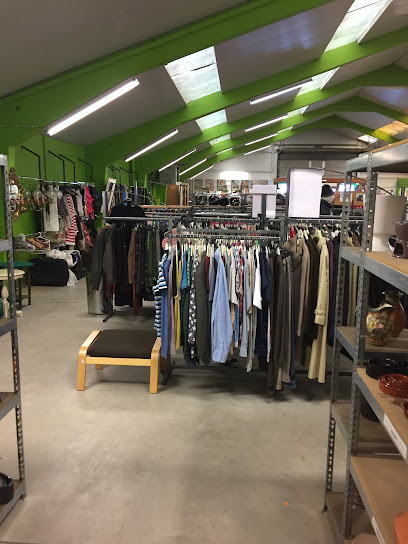
LolaLiza
Discover trendy fashion and stylish accessories at LolaLiza, a must-visit clothing store in Ostend, Belgium.

G-Star RAW Store
Discover the latest trends in denim and fashion at the G-Star RAW Store in Ostend, a premier shopping destination for stylish apparel and accessories.

Maisons du Monde
Explore unique furniture and home decor at Maisons du Monde, where style meets comfort in the heart of Ostend.
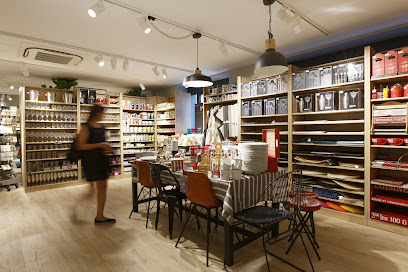
Oil & Vinegar
Explore the culinary wonders of Oil & Vinegar in Ostend, a gourmet gift shop offering exquisite oils, vinegars, and gourmet delights for every palate.
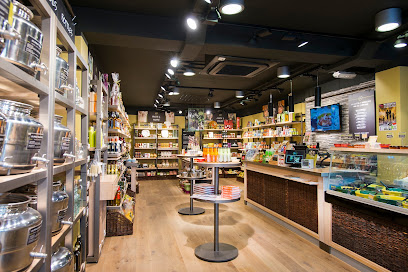
Veritas - Oostende
Discover Veritas in Oostende for a unique shopping experience featuring fashion accessories, children's clothing, and creative hobby supplies.

Essential bars & hidden hideouts
Lafayette Music Bar
Experience live music and vibrant nightlife at Lafayette Music Bar in Ostend, where every night is a celebration of sound and joy.

Blue Buddha Beach - Oostende
Experience seaside relaxation and vibrant nightlife at Blue Buddha Beach in Oostende, a premier bar destination for tourists.

Manuscript
Discover the vibrant Manuscript bar in Oostende, where great drinks and a lively atmosphere create unforgettable moments.
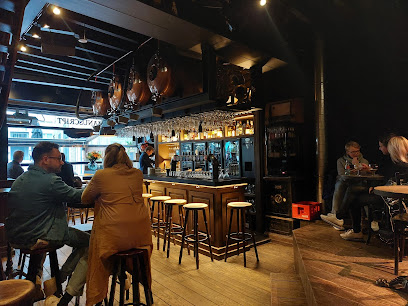
Pata Pata Beachbar
Experience the vibrant atmosphere and stunning beach views at Pata Pata Beachbar in Middelkerke, Belgium, where delicious food meets relaxation.

Tiki Beach
Discover Tiki Beach in Middelkerke – a tropical bar experience with stunning views and refreshing cocktails along the Belgian coast.

Bondi Beach Bar Oostende (Pop Up Bar)
Experience the vibrant atmosphere of Bondi Beach Bar in Oostende, where sun, sea, and delicious drinks meet for a perfect day out.

Baranquilla
Discover the vibrant atmosphere of Baranquilla, a welcoming pub in Middelkerke, serving authentic Belgian beers and delightful cocktails.
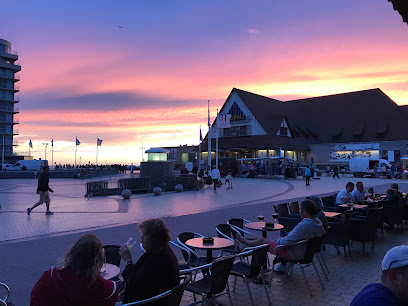
Barbaar
Experience the vibrant nightlife of Middelkerke at Barbaar, where exceptional cocktails meet delicious food in a lively atmosphere.

Hemingway
Experience the vibrant nightlife of Oostende at Hemingway Bar, where great drinks meet a lively atmosphere by the coast.

Muchacha
Discover Muchacha, a vibrant bar in Middelkerke, where you can enjoy stunning sea views and refreshing drinks in a lively atmosphere.

Victor's Boutique Bar
Experience the finest cocktails in Ostend at Victor's Boutique Bar, a chic haven for cocktail lovers in Belgium's coastal gem.

Rhumerie Louis
Experience the vibrant nightlife at Rhumerie Louis, Ostend's premier cocktail bar with an extensive rum selection and a cozy atmosphere.

Brazza cocktailbar
Discover the vibrant atmosphere and exquisite cocktails at Brazza Cocktailbar in Ostend, where every sip is a celebration.

Copador
Experience the vibrant nightlife at Copador, a lively bar in Ostend, offering delightful drinks and a welcoming atmosphere for all.

Marie K beach summer vibes
Experience the essence of summer at Marie K Beach, a lively bar in Ostend, where sun, sea, and refreshing drinks await.

Local Phrases about Belgian Coast
-
- HelloHallo
[ha-lo] - GoodbyeTot ziens
[tot zeens] - YesJa
[ya] - NoNee
[nee] - Please/You're welcomeAlsjeblieft
[als-ya-bleeft] - Thank youDank je
[dank ye] - Excuse me/SorrySorry
[sor-ree] - How are you?Hoe gaat het?
[hoo gat het] - Fine. And you?Goed. En met jou?
[good. en met yow] - Do you speak English?Spreek je Engels?
[sprek ye engels] - I don't understandIk begrijp het niet
[ik buh-greyp het neet]
- HelloHallo
-
- I'd like to see the menu, pleaseIk zou graag de menukaart zien, alstublieft
[ik zow graag de me-nu-kart zeen, al-stu-bleeft] - I don't eat meatIk eet geen vlees
[ik eet kheyn vleys] - Cheers!Proost!
[prohst] - I would like to pay, pleaseIk zou graag betalen, alstublieft
[ik zow graag buh-ta-len, al-stu-bleeft]
- I'd like to see the menu, pleaseIk zou graag de menukaart zien, alstublieft
-
- Help!Help!
[help] - Go away!Ga weg!
[ga wekh] - Call the Police!Bel de politie!
[bel de po-li-see] - Call a doctor!Bel een dokter!
[bel ayn dok-ter] - I'm lostIk ben verdwaald
[ik ben fer-dwahld] - I'm illIk ben ziek
[ik ben ziek]
- Help!Help!
-
- I'd like to buy...Ik zou graag ... kopen
[ik zow graag ... koh-pen] - I'm just lookingIk kijk alleen maar
[ik kayk al-leen mar] - How much is it?Hoeveel kost het?
[hoo-veyl kost het] - That's too expensiveDat is te duur
[dat is tuh dur] - Can you lower the price?Kan je de prijs verlagen?
[kan ye de preys ver-lah-ghen]
- I'd like to buy...Ik zou graag ... kopen
-
- What time is it?Hoe laat is het?
[hoo laht is het] - It's one o'clockHet is één uur
[het is ayyn uhr] - Half past (10)Half elf
[half elf] - MorningOchtend
[okhtend] - AfternoonNamiddag
[na-mid-dahkh] - EveningAvond
[ah-vohnd] - YesterdayGisteren
[khis-tuh-ren] - TodayVandaag
[van-dahkh] - TomorrowMorgen
[mor-khen] - 1Een
[ayn] - 2Twee
[twey] - 3Drie
[dree] - 4Vier
[veer] - 5Vijf
[vayf] - 6Zes
[zehs] - 7Zeven
[zay-ven] - 8Acht
[ahkht] - 9Negen
[nay-khen] - 10Tien
[teen]
- What time is it?Hoe laat is het?
-
- Where's a/the...?Waar is een/de...?
[vahr is ayn/de] - What's the address?Wat is het adres?
[vat is het ah-dres] - Can you show me (on the map)?Kan je het me tonen (op de kaart)?
[kan ye het me toh-nen (op de kart)] - When's the next (bus)?Wanneer is de volgende (bus)?
[ven-er is de vol-gen-de (bus)] - A ticket (to ....)Een ticket (naar ....)
[ayn ti-ket (nar)]
- Where's a/the...?Waar is een/de...?
History of Belgian Coast
-
During the Middle Ages, the Belgian Coast was dotted with vibrant Flemish cities like Bruges, which became a bustling hub of commerce and trade. The Hanseatic League, a powerful trade network, included Bruges as a key member, bringing wealth and influence to the region. The city’s canals and medieval architecture still stand as a testament to its prosperous past.
-
In 1600, the Belgian Coast was the site of the Battle of Nieuwpoort, a significant conflict during the Eighty Years' War between the Dutch Republic and the Spanish Empire. The Dutch forces, led by Maurice of Nassau, secured a crucial victory, marking a turning point in the struggle for Dutch independence. The battlefields around Nieuwpoort are now historical landmarks commemorating this event.
-
The Belgian Coast played a strategic role during World War I, particularly in the defense against German forces. The coastal town of Nieuwpoort became part of the Western Front, with extensive trench systems and fortifications built along the coast. The flooding of the Yser River by Belgian forces successfully halted the German advance, and today, memorials and museums honor the sacrifices made during this period.
-
Between the world wars, the Belgian Coast saw development as a popular destination for seaside tourism. Towns like Knokke-Heist, Blankenberge, and Ostend flourished with the construction of luxurious hotels, casinos, and promenades. This era marked the transformation of the coast into a cosmopolitan retreat, attracting visitors from across Europe.
-
During World War II, the German military constructed the Atlantic Wall along the Belgian Coast, a series of fortifications intended to repel Allied invasions. The bunkers, gun emplacements, and anti-tank obstacles built during this period still remain and can be visited today, offering a glimpse into the wartime defenses and the harsh realities of the conflict.
-
After World War II, the Belgian Coast underwent significant reconstruction and modernization. The towns and infrastructure damaged during the war were rebuilt, and new developments transformed the area into a major tourist destination. Today, the coast is known for its blend of historical charm and contemporary attractions, with a focus on sustainable tourism and preserving its cultural heritage.
Belgian Coast Essentials
-
The Belgian Coast is accessible via several major transportation hubs. The closest international airports are Brussels Airport (BRU) and Ostend-Bruges International Airport (OST). From Brussels, you can catch a direct train to coastal cities like Ostend, Blankenberge, and Knokke-Heist. The journey typically takes around 1 to 2 hours. Alternatively, renting a car and driving along the E40 highway is an option, offering a scenic route through the Belgian countryside.
-
Public transportation along the Belgian Coast is efficient and reliable. The coastal tram (Kusttram) is a popular and convenient way to travel between coastal towns, running from De Panne near the French border to Knokke-Heist near the Dutch border. Buses and trains also connect various coastal cities. Taxis are available but can be expensive. Biking is another enjoyable way to explore the coastline, with many dedicated bike paths available.
-
Belgium uses the Euro (€) as its official currency. Credit and debit cards are widely accepted in hotels, restaurants, and shops. ATMs are readily available in most coastal towns, allowing you to withdraw cash as needed. It's advisable to carry some cash, especially for small purchases at local markets and in more rural areas.
-
The Belgian Coast is generally safe for tourists. However, as with any travel destination, it is important to remain vigilant. Petty crimes like pickpocketing can occur, particularly in crowded areas such as beaches and public transport hubs. Avoid walking alone at night in poorly lit areas and always keep an eye on your belongings. There are no specific high-crime areas targeting tourists, but it's always best to stay cautious.
-
In case of an emergency, dial 112 for police, fire, or medical assistance. Most coastal towns have local police stations and medical facilities. It is recommended to have travel insurance that covers medical emergencies. Pharmacies are widely available for minor health issues and over-the-counter medications. Make sure to carry any necessary prescription medication with you.
-
Fashion: Do dress comfortably and appropriately for the weather. Casual wear is generally acceptable, but if visiting upscale restaurants or events, smart-casual attire is recommended. Religion: Do respect local customs and traditions, especially when visiting religious sites. Dress modestly and act respectfully. Public Transport: Do validate your ticket before boarding and give up your seat to elderly and disabled passengers. Don't eat or drink on public transport. Greetings: Do greet people with a friendly 'bonjour' or 'goede dag' depending on the region. A handshake is common. Eating & Drinking: Do try local delicacies such as moules-frites and Belgian waffles. Don't rush meals; dining is often a leisurely activity.
-
To experience the Belgian Coast like a local, visit the local markets for fresh seafood and regional produce. Try to catch a local festival or event, such as the Sand Sculpture Festival in Ostend or the Zoute Grand Prix in Knokke-Heist. Engage with locals, who are often friendly and willing to share insights about their towns. Don't miss out on the beautiful coastal nature reserves and dunes, perfect for hiking and bird-watching.
Nearby Cities to Belgian Coast
-
Things To Do in Ostend
-
Things To Do in Nieuwpoort
-
Things To Do in De Haan
-
Things To Do in Blankenberge
-
Things To Do in Bruges
-
Things To Do in Zeebrugge
-
Things To Do in Knokke-Heist
-
Things To Do in Ypres
-
Things To Do in Kortrijk
-
Things To Do in Ghent
-
Things To Do in Lille
-
Things To Do in Tournai
-
Things To Do in Aalst
-
Things To Do in Antwerp
-
Things To Do in Brussels













